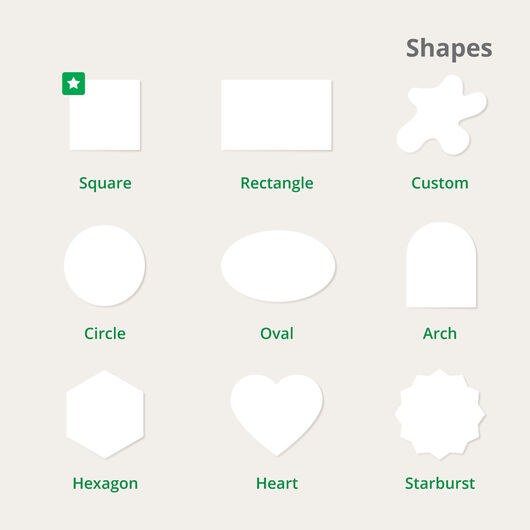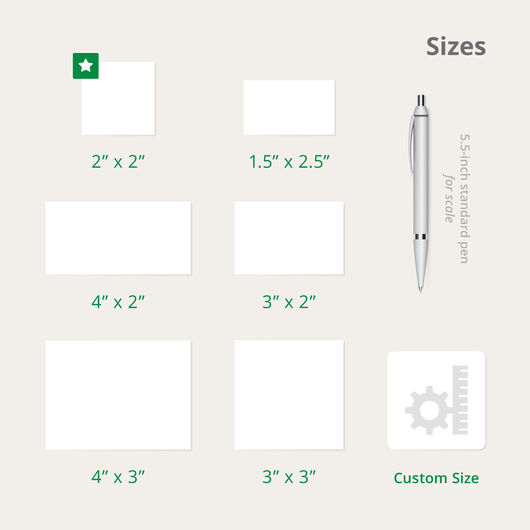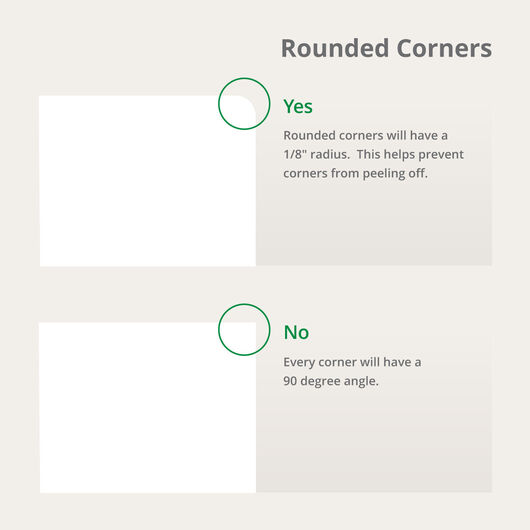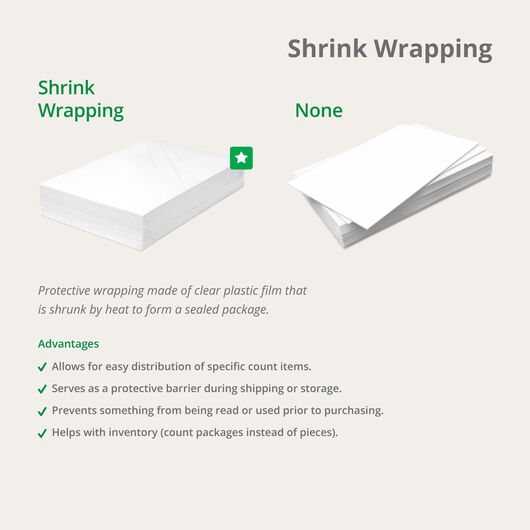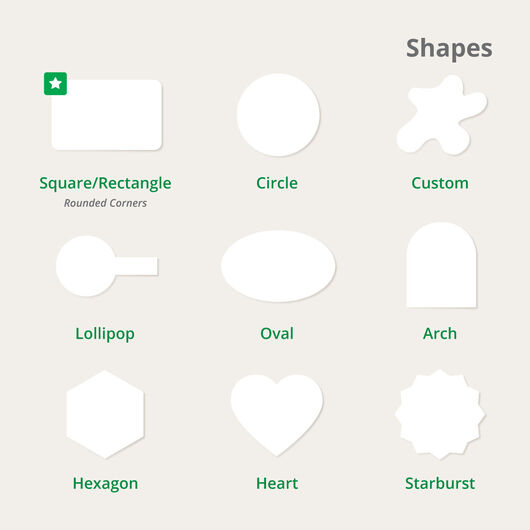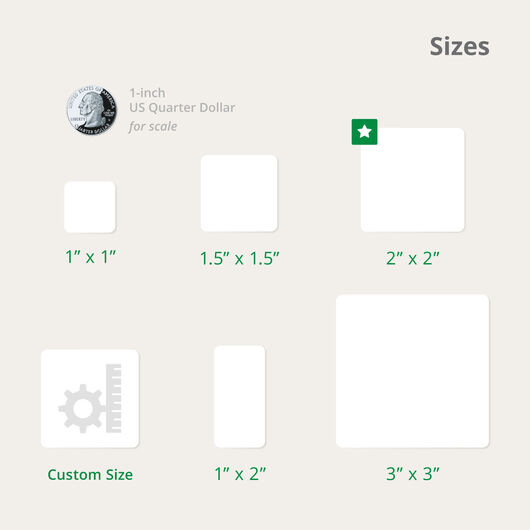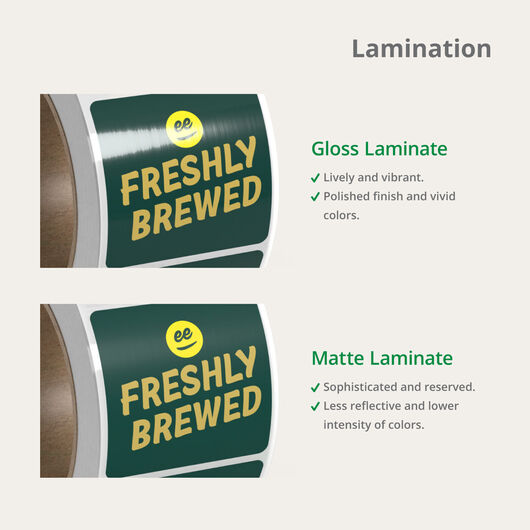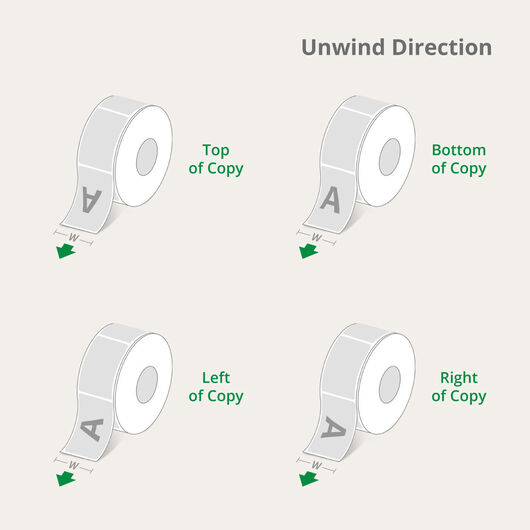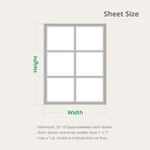Nutrition Labels
Features
Create Effective Nutrition Labels for Your Food and Beverage Products
Nutrition labels are a major requirement for all food and beverage products. Each label provides consumers the information that makes or breaks the purchase of your product. It may also list special instructions for correct usage and storage.
UPrinting lets you customize every detail—from size, shape, material, to finish—so that the US Food and Drug Administration (FDA)-required lists and quantities are conveyed clearly and completely. Read on to discover the printing options for creating accurate food nutrition labels.
Choose the Right Details to Customize Your Nutrition Labels
Order in a format that matches the application and total quantity of your order. Singles (formerly known as cut-to-size) labels are suited for order quantities under 250 pieces that you’ll be applying each piece by hand. Each individual singles come with an easy-to-peel backing paper for faster application.
Roll labels fit most automatic dispensers. These are recommended for orders above 250, wherein one is likely to fulfill high volumes and needs to send them out for delivery in a faster manner.
Print in a shape that will fit all the necessary information. Nutrition labels list the following for consumers to make an informed decision about what they consume:
- Serving information or size
- Calories
- Nutrients
- Percent daily value (%DV)
Your label should be able to show all these in a manner that’s easy to read. We recommend the larger square or rectangle sizes, but custom dimensions are available if you have a specific look in mind.
Choose a sturdy material built to withstand the item’s storage and display. Our nutrition labels come in several indoor and outdoor-friendly options. Below are the most durable choices based on what your item will be exposed to:
- White BOPP is a waterproof, UV-coated material that is built for outdoor exposure. Recommended for display in markets and anywhere with exposure to water.
- BOPP is a tear-proof and waterproof material recommended for products that are refrigerated and exposed to oil and water. Normally seen on food and beverage items that are chilled. Comes in silver metallic, clear, white, and rainbow holographic variations.
- Textured options are for labels seen on wine bottles stored temporarily in a refrigerator or icebox. Suited for any beverage or gourmet food item that will be refrigerated.
How to Format Nutrition Labels Customers Can Easily Understand
As discussed above, the FDA requires all food nutrition labels to show the information laid out below. Make sure to lay out each section accordingly to show consumers how to read nutrition labels. The details are meant to show the link between one’s diet and chronic diseases such as heart diease and obesity. Thus, the information promotes healthy food choices based on what consumers will read on the nutrition label.
- Serving size and calories printed in a larger and bolder font. The food or beverage amount should show the amount that consumers normally eat and drink. It is not a recommendation of how much they should be consuming.
- Daily values (%DV) for all nutrients should be updated accordingly. Daily values refers to the nutrient amounts to consume or the limit one should not exceed, which in turn is used to compute for the %DV placed on the label. You must also include the amount and the percent daily value for all vitamins and minerals.
- Inclusion of added sugars in grams amounts plus their percent daily value.
- Other requirements such as vitamin D and potassium. Vitamins A and C are no longer required but you may opt to add them to the list.
Download the FDA’s guide on what’s new with the nutrition facts label for your reference.
5 Design Tips for More Effective Nutrition Labels
Now that you have all the important information and specs, what needs to be considered in laying out the design? Keep these tips in mind and creating your label will be easy:
- Follow the FDA requirements on the sections that need to be in a larger and bolder font: serving size and calories.
- Stick to the standard font and listing of the information shown in the infographic above.
- Make sure the size and shape fit the surface area the label will be applied on.
- Don’t compromise readability for the sake of being fancy. It’s more important to convey the information clearly. Remember, the label is there to encourage and show consumers what they need to know about your product.
Frequently Asked Questions
All nutrition labels must include:
- Serving size
- Calories
- Nutrients
- Percent daily value (%DV)
Nutrition labels help consumers make more informed choices about the food and drinks they consume.
- Stick to foods with low amounts of trans and saturated fats, cholesterol, and sodium.
- Keep a steady supply of edibles with potassium, vitamins A and C, iron, calcium, and potassium.
- Refer to the percent daily value (%DV) column as much as possible. Less than 5% DV is low, while 20% DV is high.
BOPP is built for labeling items kept for a long time refrigerated. Despite exposure to oil and water, the design looks good as new. Gloss White BOPP also can protect your design from fading, moisture, and other external elements.
Select “Get Shipping Estimate” at the bottom of the online calculator for a list of arrival dates based on your ZIP code. Free pick up is available for those based in Los Angeles.
Nutrition label templates.
Save time by using our free templates. Our templates have been setup with proper bleeds and margins, assuring your print job turns out accurate. To download, select a file type and click on the size below.
Customer Questions
Your files will be reviewed for printing errors without paying a cent.
150+ print products to help you make a good impression. 1000+ options to customize to your heart’s content.
The product you want. The way you want. Professional printing guaranteed.


